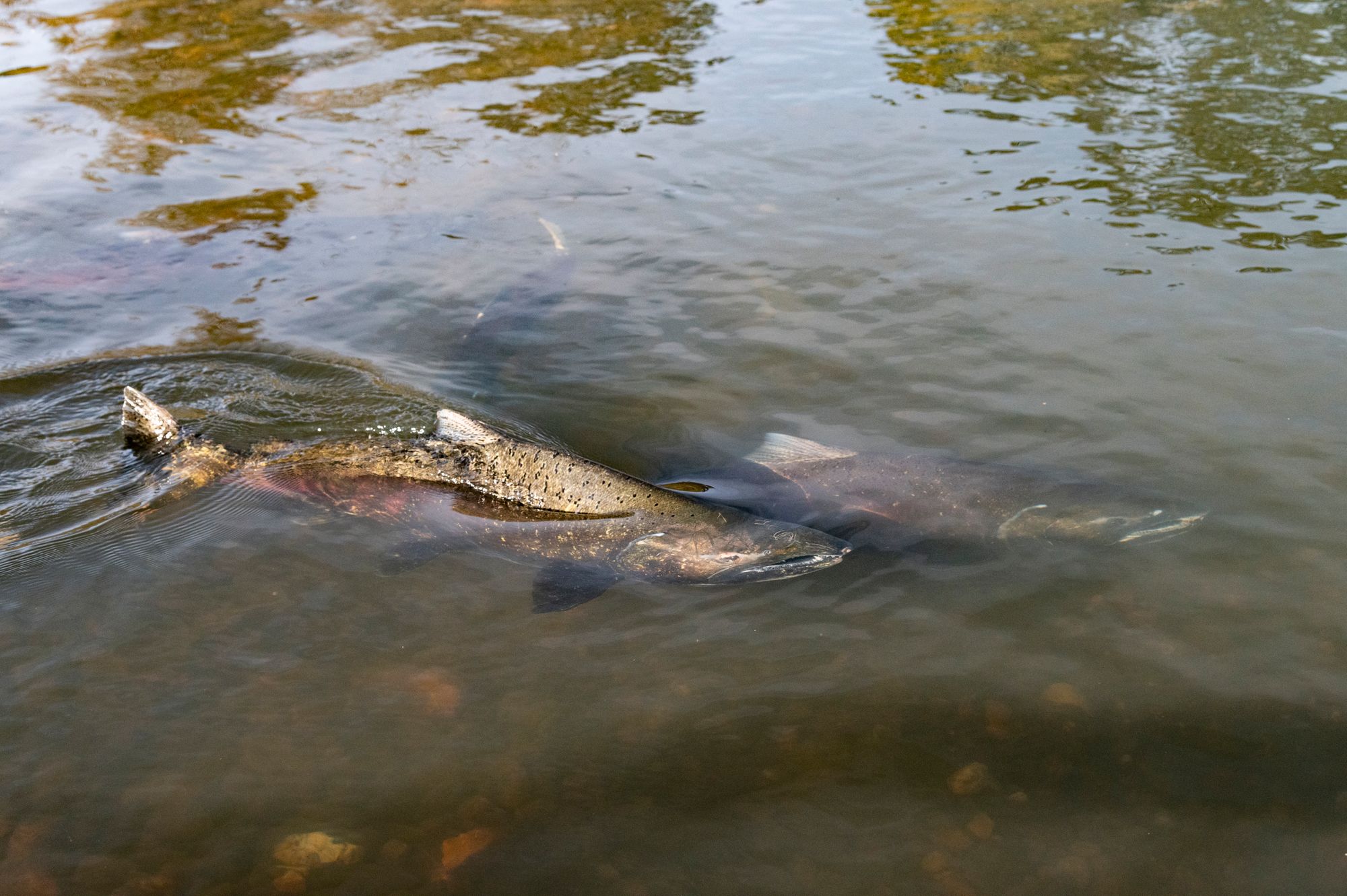Over 20,000 Chinook salmon made a fall run to spawn in the Mokelumne River this year, wildlife officials say.
That’s the highest number of any year since record-keeping began in 1940, as KPIX reported.
"This year's historic return highlights EBMUD's longstanding collaboration in the region and our deep commitment to sustaining this vital fish hatchery and protecting the river's habitat," said Andy Katz, East Bay Municipal Utility District (EBMUD) board president, per an EBMUD press release.

The Mokelumne River runs for 95 miles from the central Sierra Nevadas to the Sacramento-San Joaquin River (a lot of water is used for Central Valley agriculture irrigation and also provides water for the east San Francisco Bay Area via the Mokelumne Aqueduct).
It's a main home for steelhead, rainbow trout, brown trout, and Chinook salmon, although their habitat has been damaged over the past century by damming and drought. The river is just a small tributary to the larger Sacramento-San Joaquin River (about 3% of its flow), but it represents about 50% of the entire salmon commercial catch in California, according to the Ledger-Dispatch.
Groups of conservationists have been restoring the river for salmon spawning, which happens from August through July ever year. They built a hatchery where they spawn and rear salmon and steelhead eggs, then release them below the Camanche Dam on the river, per the CA Department of Wildlife.

Additionally, in the winter of 2022, another of the dams along the river, the 8-foot concrete Hemphill Dam outside of Sacramento, was removed, which now opens another 8 miles of spawnable riverbed for salmons, according to a local conservation nonprofit.
The Chinook salmon born in the Mokelumne river spend two to five years maturing in the Pacific Ocean, then return to their home to reproduce and die.
On October 29, 2023, biologists tallied the largest one-day salmon count in 30 years: 1,941 fish, according to EBMUD.
Images of 2023 Chinook salmon population via EBMUD.

